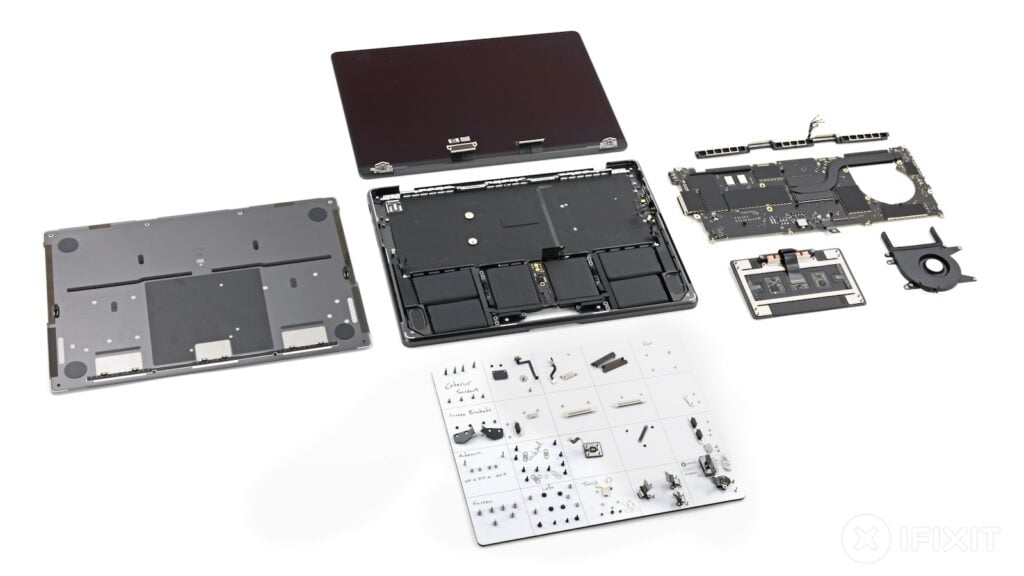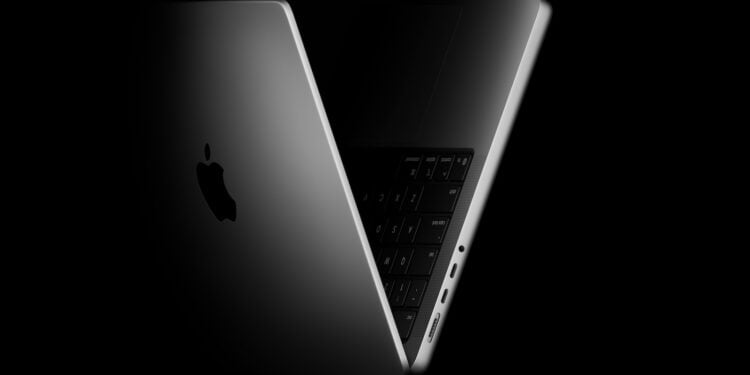The new M5 MacBook Pro has just been released, and as usual, iFixit immediately disassembled it to find out what's going on inside. There are no major surprises. The focus is on the new M5 chip and a faster SSD, while the design and structure remain largely unchanged. Nevertheless, iFixit did find some small but notable differences in terms of repairability.
For years, the MacBook Pro has stood for high performance, minimalist design, and a very compact construction. Apple remains true to this philosophy with the new model. While the new chip generation provides more power and efficiency, the internal workings of the device reveal that repairs are still complicated. This is precisely confirmed by the latest teardown from iFixit, which analyzed the internal structures and design of the new M5 MacBook Pro in detail.
Familiar design with familiar hurdles
Visually, the M5 MacBook Pro barely differs from its predecessor. The casing is still secured with P5 screws – a standard that has been used in all MacBook Pro models of recent years. Opening the device reveals a familiar interior: The components are tightly packed, and many parts are interconnected.
The battery replacement remains particularly striking. Apple doesn't sell the battery separately, but only as part of the entire main case, which also includes the keyboard. This means that replacing the battery requires virtually disassembling the entire device. According to iFixit, accessing the battery requires removing the motherboard, fans, connectors, and other components. This makes the process complex and time-consuming—a clear disadvantage for repairs outside of Apple's service network.

A small but meaningful improvement
Despite the overall minor changes, iFixit has identified one improvement that somewhat reduces the effort required to open the device. The new model no longer requires removing the trackpad to access the tabs on the central battery cells. This makes accessing the battery a bit easier and reduces the risk of damaging sensitive components like cables or sensors.
According to iFixit, the battery itself has a capacity of 72.6 watt-hours—slightly more than the M4 MacBook Pro, which had 72.4 Wh. However, this isn't expected to make a significant difference in practice. It's notable that Apple continues to list 72.4 Wh on its official website. Whether this is a rounding error or a conservative specification is unclear.
The M5 chip as a central upgrade
At the heart of the new model is the M5 chip, Apple's latest processor, which delivers increased performance and efficiency. Combined with the faster SSD, the M5 MacBook Pro offers significantly improved loading times and even smoother performance, especially in compute-intensive applications like video rendering or software development.
However, the basic design of the device hasn't changed. The motherboard remains complex, the components are tightly integrated, and a modular design is still not planned. This means that repairability remains at a similar level to the previous generation.
iFixit's conclusion: little progress in repairability
Since the design and internal structures have barely changed, iFixit's rating is also consistent. The M5 MacBook Pro receives a repairability rating of 4 out of 10, the same as its predecessor.
This rating reflects that while Apple continues to make strides in performance and energy efficiency, it continues to severely restrict the accessibility and replaceability of components. Therefore, anyone who wants to replace the battery or other parts themselves still faces a complicated task.
M5 MacBook Pro shines with performance, not with repairability
The M5 MacBook Pro impresses technically – with a powerful processor, fast SSD, and solid energy efficiency. When it comes to repairability, however, everything remains the same. iFixit confirms that Apple has barely simplified or improved anything in the latest model. The small change to battery access is a step in the right direction, but not enough to make the device truly serviceable. With a rating of 4 out of 10, the M5 MacBook Pro remains a powerful but difficult-to-repair laptop. Those who value easy repairs or sustainability will still have little joy with this. (Image: Apple)
- Apple surprises with strong growth in Mac sales
- Apple accelerates US production for its own AI servers
- Vimeo expands 3D support for Apple Vision Pro
- Is Apple withdrawing app tracking protection due to EU pressure?
- Future iPhone could have greater NFC range
- iPhone Air: Production drops drastically after sales slump
- Apple stock in focus: Wells Fargo raises target to $290
- Apple Vision Pro not eligible for trade-in, according to Apple
- Apple is working on a tool for app data migration to Android
- iPhone Air weakens – Apple relies on other models
- Apple Vision Pro – Apple relies on Vietnam for manufacturing
- Samsung Galaxy XR – The new mixed reality experience
- iPhone 17 Pro turning pink? What's really behind it?
- iPhone 17 booming – Wedbush raises price target for Apple
- M5 MacBook Pro Reviews: Apple's professional laptop in a detailed test
- Apple Vision Pro 2025 reviews: More stable, sharper, better
- New AI browser ChatGPT Atlas: More than just a search
- Shrinking Season 3 starts in January 2026 on Apple TV
- WhatsApp warns of fraud: New protection feature active
- M5 iPad Pro reviews: More power, less limit
- Apple takes legal action against the Digital Markets Act





